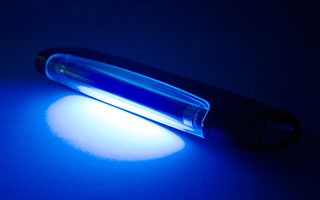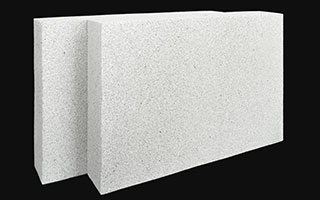
TRI Austin’s Materials Division has over 40 years of experience in applied research, testing, and product development in the area of specialty polymer based materials. Our chemists formulate and synthesize new high performance materials to meet the rigorous requirements of the Department of Defense and other Government and commercial clients. Chemistry specialty areas include epoxies, polyurethanes, polyureas, polysulfides, acrylics and silicones. Common applications include coatings, adhesives, sealants, foams, gap fillers, and composite resin systems.
Since the company’s inception, TRI Austin’s Materials Division has been a leader in the development and testing of subsea materials for the Navy and the Oil and Gas industry. Products include protective coatings to extend the life of underwater electrical connectors, superior materials for towed array systems, and molding compounds for cables, connectors, transducers, and down hole applications. We also specialize in accelerated life testing (ALT), failure analysis, and reliability prediction in the subsea environment.
Our Materials Division has developed many environmentally friendly replacements for high performance materials without the use of hazardous volatile organic compounds (VOCs), chromates, and other toxic constituents. New materials include saltwater fast greases with no VOC outgassing, water based hydraulic fluids, and nontoxic rubber cements.
We have developed numerous products for personal protection, such as camouflage face paint coatings that prevent thermal IED flash burns, powder free surgical gloves, chemical and biological warfare agent resistant water pouches, and methods of ensuring complete decontamination of hazardous material spill responders.
TRI Austin’s Materials Division has also formulated resins for high temperature composite applications, durable gap filler materials, and UV cure resin systems and foams for aircraft composite repair.
Materials Division Specialties
- Protective coatings
- Subsea materials
- Subsea ALT
- Environmentally friendly replacement materials
- Personal protection
- High temperature composite resins
- Composite repair
- Gap fillers
Material Approaches to Mitigate Gap Filler Cracking
Development of crack resistant conductive gap-fillers fits within the Air Force’s goal of investing in…
Aircraft Battle Damage Repair (ABDR) with Ultraviolet Cure Resin Systems
Rapid on-aircraft repair techniques for fiberglass composite components are essential to the support of the…
Aircraft Battle Damage Repair Foams
TRI Austin developed a series of room temperature cure syntactic foam products for Aircraft Battle…
Efficient On-Aircraft Composite Repair Process Requiring Minimal Support Equipment
More efficient on-aircraft repair processes are needed for structural organic-matrix composite components. In response to…
Innovative Matrix Systems for Carbon Fiber Reinforced Composite Tactical Rocket Motor Applications
The superior strength-to-weight ratio of composites has prompted expanded usage in tactical missiles. However, increasing…
Decon Check – Materials and Methods for Thorough Decontamination
Some hazardous materials (HazMats) are so toxic that a few drops on the skin can…
CBW Safe Water Pouch
TRI Austin developed a chemical-biological warfare (CBW) resistant water pouch to provide safe drinking water…
Cosmetic Coating to Protect Unclothed Skin from Thermal (Burn) Injury
Burns are generally prevented by clothing and materials that offer a considerable degree of thermal…
Water Based Hydraulic Fluid
Petroleum based hydraulics are problematic in terms of environmental hazards, flammability, and cost. The Submarine…









